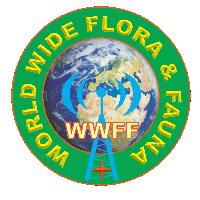WWFF Spotline Information
Official WWFF spots and agenda system
About WWFF
World Wide Flora & Fauna (WWFF) is an amateur radio program that encourages radio operators to operate from protected nature areas and promotes awareness of the importance of protecting our natural environment.
The WWFF program aims to draw attention to the importance of protecting nature, flora and fauna, and encourages amateur radio operators to operate from designated protected nature parks and areas around the world.
Spotline
The service you are using here is called Spotline. Spotline is a tool for WWFF activators and hunters to share and discover active WWFF references. Spotline was released on June 1st, 2025.
Spotline Features
- WWFF agenda and spot listing data
- RBN Autospotting from the Reverse Beacon Network
- For your logging software - a DX cluster "telnet" service at port 7300
- DX Cluster spotting
- API access for integration with other applications
Apps that integrate with Spotline
- HamAlert
- Polo Ham 2K - portable logger
- fieldspotter.radio
- parksnpeaks.org
RBN Autospotting
RBN Autospotting uses the Reverse Beacon Network (RBN) to automatically create spots in the Spotline system when it detects a callsign at an active agenda. This means that if your CW call is heard by any of the RBN stations, your spot will be automatically created in the Spotline system.
It performs two types of spotting:
- Auto-spotting: Active agenda-based spotting
- Re-spotting: Tracking of recent spots from the RBN
Rules and limits for spotting in general and for the RBN autospotting:
- Duplicate check (all spots): A spot is considered a duplicate if it has the same frequency (±1kHz), callsign and reference within 10 minutes of a previous spot. This applies to all spots regardless of their source.
- Auto-spotting: For stations with an active agenda, spots will be created during their scheduled activation time (subject to the duplicate check rule above).
- Re-spotting: For non-agenda spots, if a station is heard within 30 minutes of their previous spot, it can trigger a re-spot (subject to the duplicate check rule above).
DX Cluster spotting
DX Cluster spotting is a feature that automatically spots to the DX Cluster network. You can find these spots being spotted with the callsign OH0M. Currently, RBN spots are not re-spotted to the DX Cluster - so if you want to make sure your spots are spotted to DX Cluster as well, you need to spot them manunually or for example with the Polo Ham 2K - app.
DXspider / DX Cluster service at port 7300
We provide a telnet server that mimics the DXspider service. It is useful for software that wants to connect to a DX cluster-style service and uses the 'DXspider' or 'telnet' protocol.
Agenda & Spot Data
You can access the WWFF agenda and spot data directly as plain text JSON files. These files are updated automatically by the system and can be used for integration purposes.
The recommended refresh interval is 30 seconds. Please do not exceed this to avoid overloading the server.
Available Files
- Active Agendas - Contains all currently active WWFF agendas with details such as activator callsigns, references, start/end times, and frequencies.
- /static/agendas_active.json
- All Agendas - Contains all agendas (past, current, and future) with complete details.
- /static/agendas.json
- Recent Spots - Contains recent spots with information about the activator, spotter, frequency, mode, and timestamp.
- /static/spots.json
API Access
Spotline provides API access for integration with other applications. To request an API key, please contact us through WWFF Bug Reports & Feature Requests.
API documentation is available for developers who wish to integrate with Spotline.
Do not do this: Adding a new spot to make a comment
Spotline is spot list service, not a bulletin board or discussion forum. Here is list why using this for comments / sending messages is forbidden:
- It adds wrong information to the spot list - also people are not interested in your comments, they are interested in actual spots
- Activators usually don't follow this service while activating - your comments will not be seen by them. Contact them through QRZ or other means
- It makes it harder to find actual spots - your comments will be mixed with actual true spots
- A new spot is posted to DX Cluster based on your comment and adds confusing and wrong information
- Alert systems like HamAlert will not be able to distinguish between actual spots and comments - causing false alerts
Please note that continuous misuse of this service will result in your account being banned.
Our aim is to provide clear, up-to-date list of spots to all users and provide quality service for the WWFF program.
Contact
We are receiving enhancement ideas quite often and are grateful for the interest and the support to develop this service.
All ideas are registered and written down - however we cannot guarantee that we will implement all ideas. We will try our best to implement the most popular ideas - so keep them coming!
So: For questions, suggestions, or bug reports, please visit the official WWFF support page: WWFF Bug Reports & Feature Requests.


